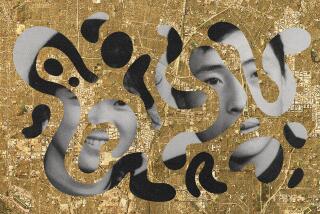toward EQUALITY : EXPLORING A WORLD OF DIFFERENCE : BACKLASH AGAINST THE ‘Model Minority’ : Resentments Spawn Anti-Asian-American Insults and Violence
- Share via
Lucie Cheng has been a faculty member at UCLA for 18 years, but never had she experienced anything like this. She recalled that, while walking on campus recently, two white male students yelled a racial epithet at her and told her, “Go home!”
Cheng, a sociology professor, noted that the taunts came amid growing incidents of anti-Asian graffiti on campus, perhaps sparked by resentments of Asians’ growing numbers on campus and their academic success.
The incidents have begun to occur even in neighborhoods generally considered racially liberal. Three Chinese-American businessmen, for example, recently fought with two whites in a Silver Lake restaurant after the whites asked them, insultingly, if they were in town for a Honda convention and where their cameras were.
“We’ve lived in Silver Lake for some 20 years, and Silver Lake is one of the most diverse communities around,” said one of the businessmen, Martin V. Lee, a real estate developer and attorney. “It’s kind of frightening to see that happen in our neighborhood.”
Asians in Southern California--as in many other parts of the United States--are increasingly becoming targets of anti-Asian backlash or resentments similar to that seen against Japanese-Americans during World War II or against Chinese immigrants during the anti-Asian hysteria of the late 1800s.
Violence has also been reported between blacks and Korean grocery store owners in black neighborhoods. Blacks have claimed the store owners do not hire enough blacks or mistreat black customers. In high schools and colleges, white students have attacked Asian students or taunted them with racial epithets.
The backlash stems in part from trade frictions with Japan and other Asian nations. It also derives from the rapid growth of Asian immigration here and the resulting economic competition between those newcomers and non-Asians over jobs and scare resources. Some blame just simple intolerance or ignorance over cultural differences.
The backlash has entered political and business arenas. Several companies have instituted “English only” rules limiting the ability of Asians and other immigrants to speak their native tongues at work. Elected officials like Los Angeles City Councilman Nate Holden have called for restrictions to limit real estate investments by Asians and Asian immigrants who are not U.S. citizens. In Monterey Park, where the Chinese immigrant population has boomed in the past decade, some City Council members are considering limits on Chinese-language business signs as well as Chinese-language books in the public library.
But in its ugliest side, the backlash has come in the form of racially motivated violence, intimidation and epithets, in some cases coming from other minorities.
The Los Angeles County Commission on Human Rights reports increasing “hate crimes” against Asians as part of overall trend of rising racially motivated attacks against minorities. These include graffiti and hate literature, assaults or attempted assaults, and vandalism, said Eugene S. Mornell, commission executive director.
“We think there are many more incidents than are reported,” said Mornell, noting that Asians tend to mistrust police or have cultural or language barriers that hinder their reporting of crimes.
However, government agencies and community leaders are beginning to undertake innovative efforts to stem the tide.
The Los Angeles Police Department has set up a program to monitor incidents of racial, religious and anti-gay violence, a program hailed by some community leaders as the first of its kind among major West Coast cities. And while the program has been ineffective among some Asians due to their lack of knowledge of English and the LAPD’s lack of bilingual staff to communicate with immigrants, efforts are under way to improve the program and better publicize it.
Korean and black church and community leaders have eased tensions through meetings of diverse community representatives. To further reduce tensions among minorities, community leaders are planning a conference sometime this year for black, Latino, Asian and American Indian business and community leaders. The aim: To foster economic development, joint ventures, fair share agreements, better communications and hiring practices.
More to Read
Sign up for Essential California
The most important California stories and recommendations in your inbox every morning.
You may occasionally receive promotional content from the Los Angeles Times.













